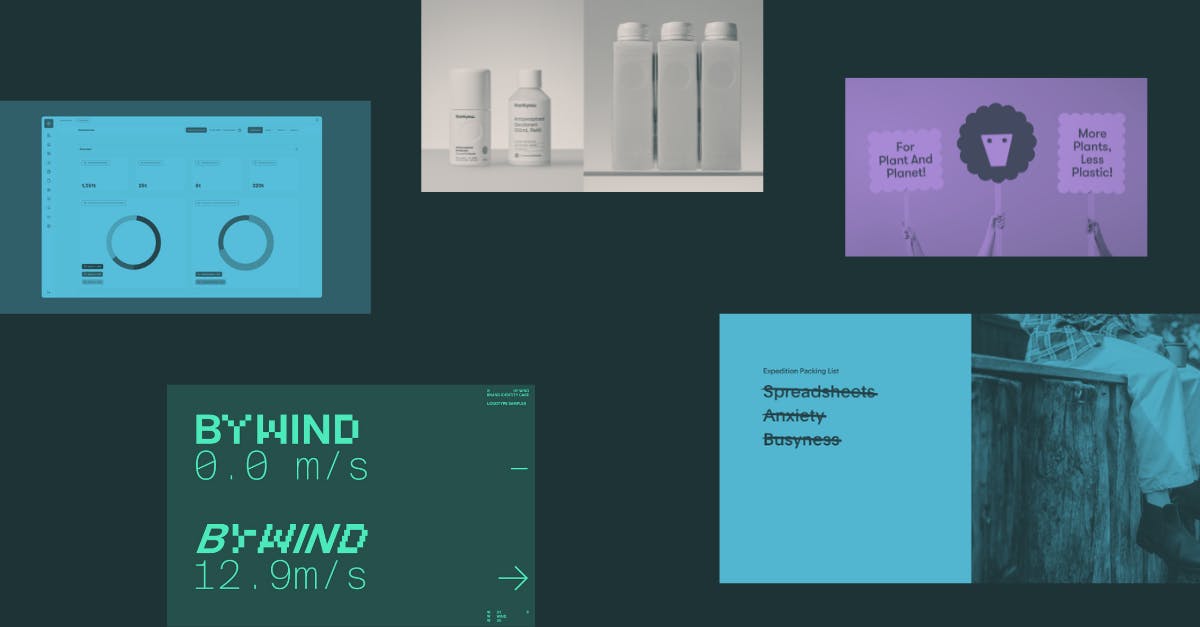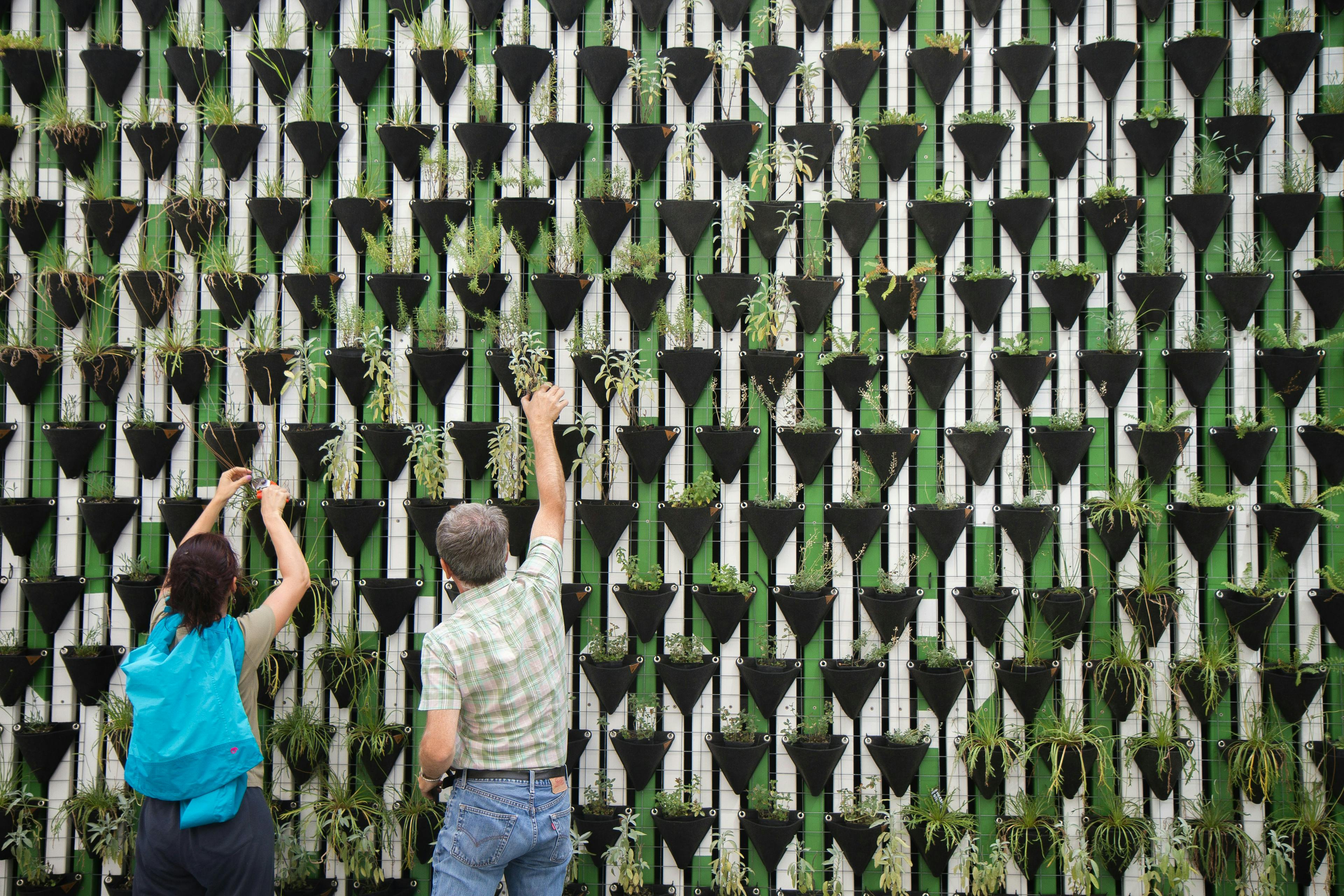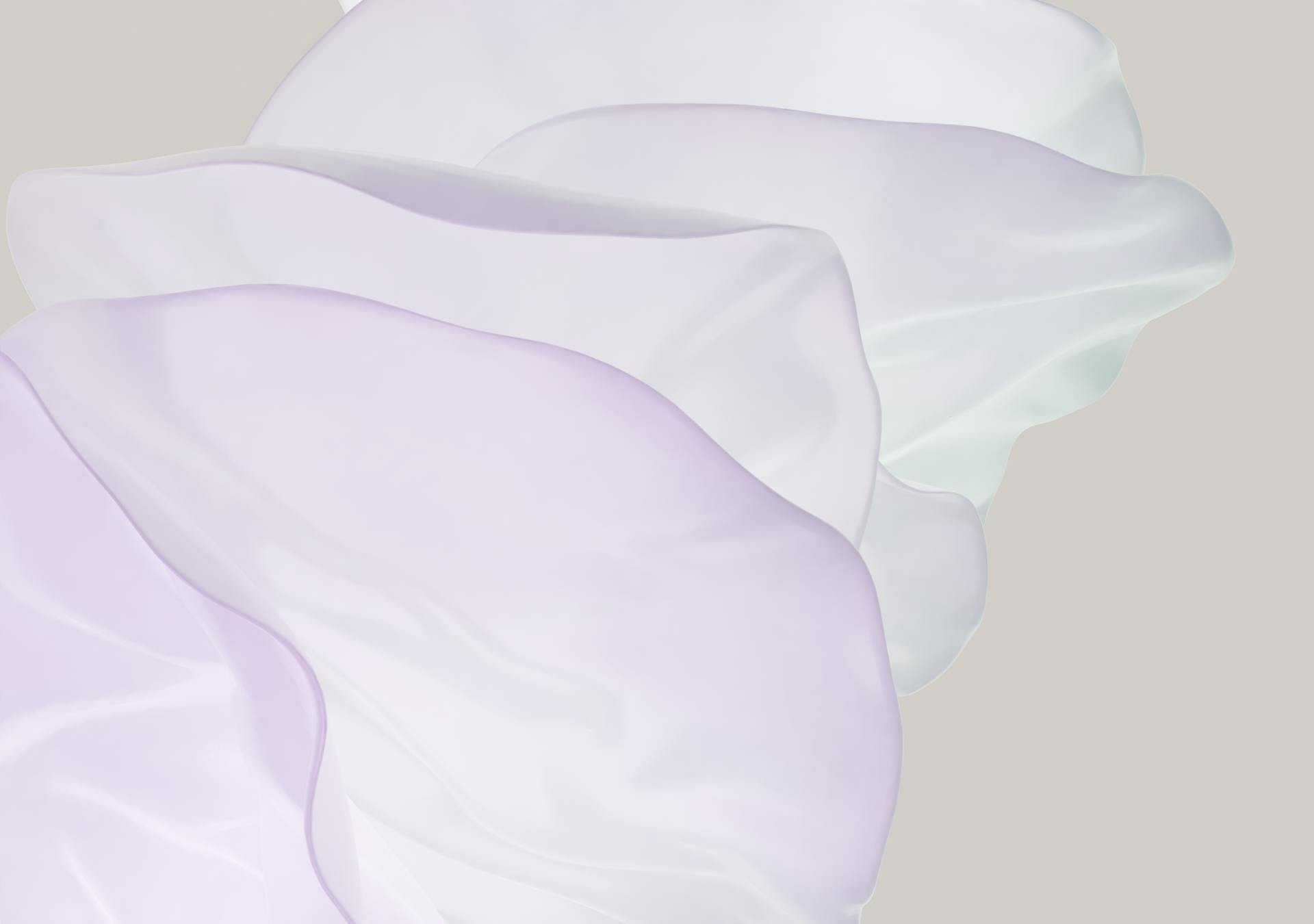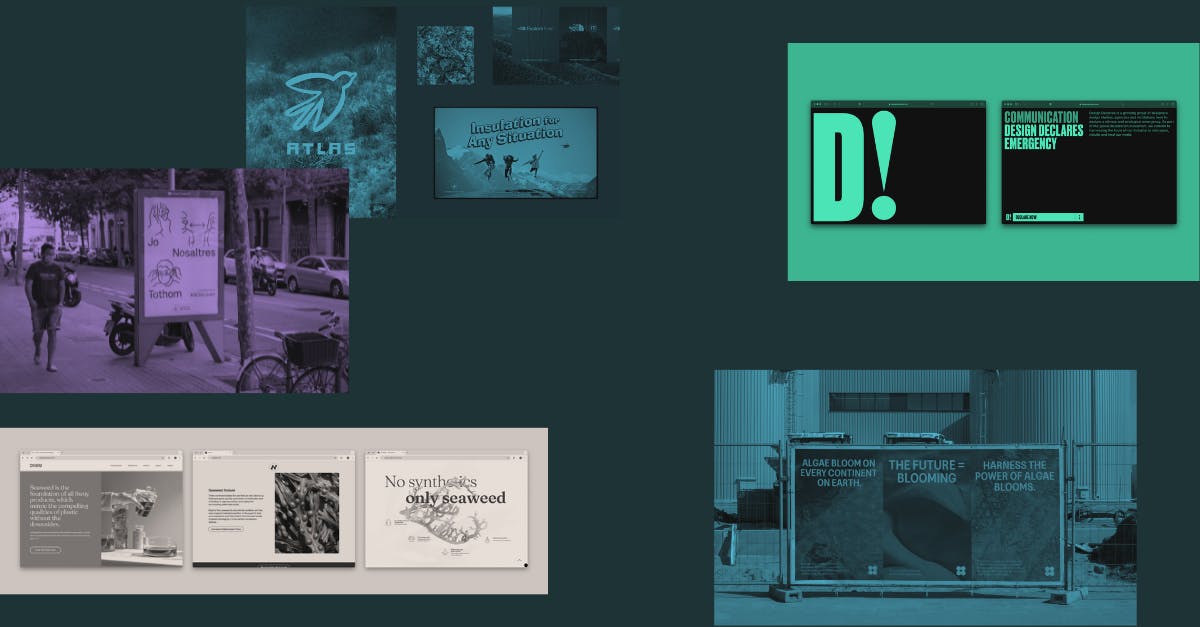
What does sustainability look like?
Written by
Jordan Stokes, Caroline Leung, Alanna Roy Bentley, Jaymee Kim, and Alex Shute - Sustainability Transformation
Welcome to the latest edition of ‘What Does Sustainability Look Like?’
In this series, Edge Impact's Brand and Communications team showcases the purpose-driven designs, sustainable brands, and impactful ideas that have recently inspired them.
This month, we spotlight innovative brands taking bold stands against climate change, highlight the rise of seaweed-based plastic alternatives, and reflect on the importance of slowing down to reconnect with nature.
Embracing nature around us by Brilliant Planet
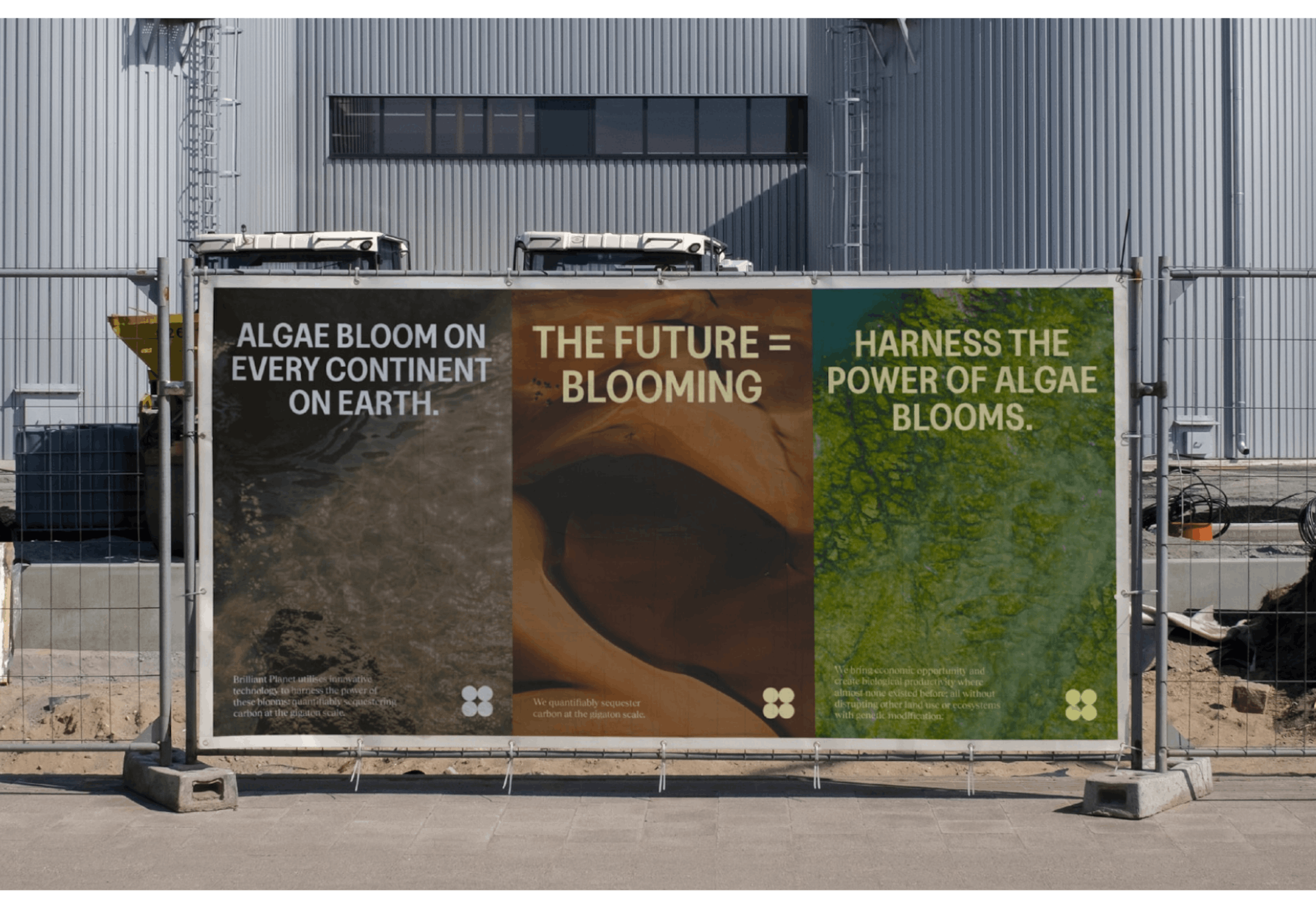
Written by Caroline Leung, Design Director
Brilliant Planet's approach to combating climate change is nothing short of remarkable. Their utilisation of algae as a means to remove CO₂ from the atmosphere is both innovative and practical.
Marine algae have the scale to make a meaningful difference to climate change. Coastal algal blooms feed almost all fisheries on our planet and already contribute 20% to photosynthesis-based global atmospheric CO₂ reduction every year (more than all forests combined).
Brilliant Planet have taken this to the next level by replicating these blooms year-round in hot, coastal deserts, so that algae can significantly contribute to ‘additional’ sequestration without interfering with existing agricultural land or ecosystem resources, even at a large scale.
What sets them apart is their commitment to translating this concept into tangible action. Through their meticulous process, they not only reduce carbon emissions but permanently sequester CO₂ underground through the burial of the algae into the earth. Their choice of the desert as a site for this mission underscores their pragmatism and resourcefulness.
Coming across business’ that combine innovation, practicality and creativity all weaved into one for a purpose to help our planet is what excites me most. What truly stands out to me is their unwavering faith in the potential of nature as a solution to our environmental challenges. Brilliant Planet serves as a beacon of hope, demonstrating that with scientific ingenuity and dedication so we can forge a sustainable future.
The power of simplicity

Written by Jaymee Kim, Senior Designer
When designing for a brand, icons are one of the first things that I consider in the look and feel stage. And now really thinking about it, I actually quite enjoy the challenge of designing icons and all the detailed considerations around it that deem it a successful (or an unsuccessful) icon.
I believe icons cannot be an afterthought as they are not just mere decoration for a brand, nor are they one size fits all. They play a huge part in first impressions of a brand and more importantly how complex concepts are communicated and understood.
Despite their small size, they require critical thinking and thoughtfulness to ensure alignment and consistency with a brand, uniqueness, usability, longevity and accessibility in making sure it’s able to be understood and seen.
The other day, I came across a design studio called Forma, who have a division specifically for the designs of icons called Forma Icons. I thought this was genius. I particularly enjoyed their Jo, Nosaltres, Tothom” (me, us, everyone) campaign they illustrated commissioned by Familia for Barcelona City Council. It’s a really good example of the power of simplicity, and how icons can illustrate directions or feel familiar without saying a lot. I love that the purpose of the illustration doesn’t stop there, but that it’s able to possess unique character and flex itself into motion.
If we don’t simplify with intention and purpose, we can fall into the trap of over simplifying. In the sustainability space this can easily translate to greenwashing–such as the obvious adding of leaves or hands holding a globe.
When we create icons, we are conscious to carefully consider the context of our clients and their messaging goals (you can have a look at a couple of projects on our website). Icons need a lot of love and care, and its great to see when they are given their dues.
From brand strategy to digital campaigns, we help organisations of all sizes embed sustainability authentically.
Learn more about our Brand, Communications & Creative Services.
Making waves in the saturated market of seaweed-based plastic alternatives

Written by Alex Shute, Designer
As the demand for sustainable alternatives to traditional plastics continues to surge, a tsunami of companies have emerged globally, offering seaweed-based solutions. Diving into researching these companies, I noticed that many of them share the same website formula: (1x iPhone photo of a beach + 1x stock image of a beaker filled with seaweed pellets) x (Wordpress site + websafe font).
I don’t blame them - these types of start ups have limited resources, and brand & design often sinks to the bottom of the list of priorities. Furthermore, Australian companies face the added obstacle of strict rules related to recycling organic packaging, which further limits investment in this kind of technology.
Making waves in the design-space amongst this sea of competitors, however, are three companies in particular: Sway, Notpla, and Zerocircle. What do they have in common? Cohesive brand elements, recognisable logos, trendy typefaces, playful illustrations, bespoke content, and art direction that’s to ‘dive’ for.
In a market that risks becoming oversaturated with similar offerings, strong branding has become these companies’ crucial differentiator. By employing the design trends of today, these brands position themselves as modern and current leaders in the sustainable packaging space.
As more players enter the space and sustainable technology and consumer insights develop, I look forward to monitoring how these types of brands react to the quickly changing tides of the market. Will they innovate and evolve, or will they remain stagnant and become a fossilised memory of this moment in sustainable packaging’s history?
Declaring a climate emergency in the creative community
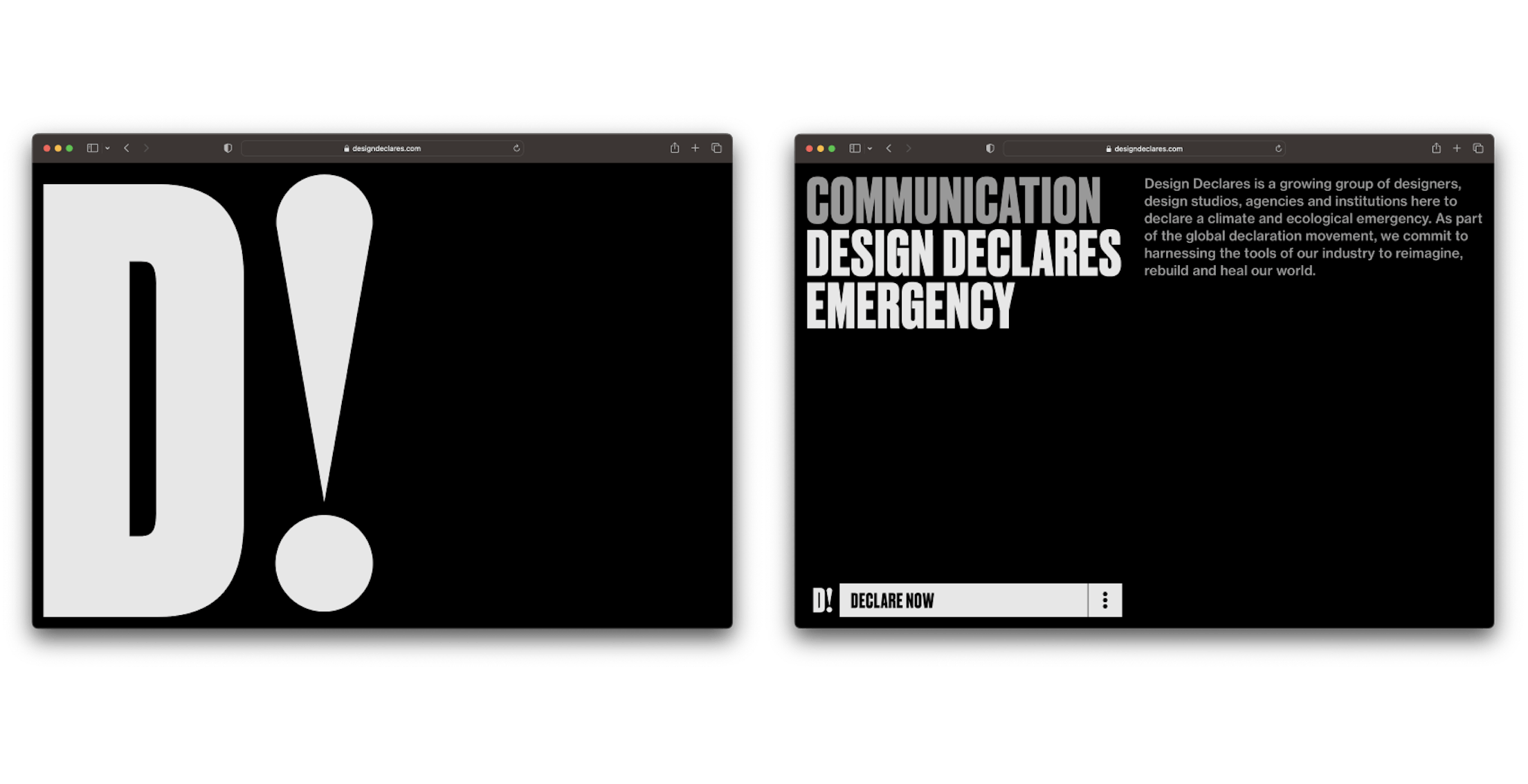
Written by Jordan Stokes, Global Creative Director
Design Declares is a growing group of designers, design studios, agencies and institutions here to declare a climate and ecological emergency.
By bringing the creative and design industry together in recognition of the work that needs to be done, the movement aims to harness the skills and tools of creatives all over the world to raise awareness, educate and drive action. I mean, sounds like someone we know.
I was completely drawn in at the first step. I love the simplicity of the brand and how it’s brought together on the website as the immediate touchpoint. There’s a craft to the identity that brings elements letterpress and classic British graphic design (think Pentagram, Hat-Trick and early The Chase) that will just instantly resonate with most designers.
It’s been done in a way though that doesn’t feel faux or fake, but leans on the bold, powerful nature of woodcut type to match the clarity, simplicity and urgency of the messages.
The craft in the identity has been echoed in the interaction design and layout of the website. Simple, smooth transitions and clean structured layout are utilised here to make it easy to navigate, then combined with some excellent copy it’s also a great read.
The polish and craft is followed to a tee in the materials / assets that are provided when you sign up, making it easy for teams to share their support, recognition or declaration ultimately contributing to a consolidated brand message.
This is something that more grassroots action groups could take note of and consider design, brand and communication more of a vital part of their set-up, rather than thinking of it as ‘commercial’ or a nice to have. In this instance, a community led movement has the gravitas of a much larger and sophisticated organisation through it’s branding.
The live Notion toolkit that D! uses to connect the community is the first place that the craft drops just a little, but it still manages to stay on brand purely because Notion is a great brand fit in itself. The digitisation and the way the team have organised resources, commentary and information brings an instant sense of community and a buzz to getting involved which is reminiscent of project setup and sprint methodology that will be familiar to the target audience.
My one tiny negative is that I sense a lack of ‘real sustainability’ input in some of the messaging and commentary, some of the resources feel less impactful and niche to an industry that needs to broaden and not get more insular if we’re to show the world how we can really help.
This isn’t something that can take away from the obvious amount of consideration of (I’ll say it again) craft that helps make D! a benchmark piece of sustainability led branding.
Touching moss

Written by Alanna Roy Bentley, Senior Creative
Have you ever walked a familiar path, and then realised something’s been removed, but you couldn’t actually precisely describe what it was? Has this ever happened to you about a tree on a street that got chopped, or a plant in your local landscape? You may have walked passed it daily but when you try to remember what shape it was, or what species, or how tall exactly - the details are fuzzy.
Hopefully this isn’t a very frequent occurrence, but I’m hoping that in any case I am describing something familiar to most of us: we don’t know what’s missing until its gone (the sentiment immortalised in song here).
Living in urban environments, surrounded by man-made structures, it can be easy for this to happen in the natural world around us - we don’t spend as much time in it, and so we don’t know it as well, and can be less intimately connected or affected by its changes.
I recently returned from my first trip to the South Island of Aotearoa, New Zealand - and (as anyone who has had the privilege to go will likely also tell you) I was completely spellbound by the landscape, and relished in the time outdoors to look, listen, learn; to lean down to the ground for several minutes and observe how one small patch of moss I usually walk past in less than a second contains a whole world of life.
Coming back to Eora, Sydney I reflected more deeply on how this desire to get outside is a need shared by many, and is an interesting example of what behaviour change in sustainability looks like.
For example locally based Atlas Outdoor Club is a community recently founded to bring people together outside. Or, on a global scale, The NorthFace’s Explore Fund was started to grant funding to support organisations that foster a community of new explorers and protect the environment, such as Mappa in Melbourne.
Aotearoa is also home to the famous outdoor clothing brand Kathmandu, who’s latest brand platform lead by Special New Zealand has been “We’re Out There” - inspiring a new generation to feel the benefits of being outside (check out their latest ad campaign directed by the very clever Stefan Hunt).
To truly appreciate and protect our natural surroundings, we need to cultivate a deeper connection with our landscape. By taking the time to observe and understand the intricacies of even the smallest elements, like a patch of moss, we develop a sense of importance and a desire to protect them when they're threatened.
In essence, let's stare at small pieces of moss more, so that when they're at risk, we'll be there to protect them, driven by a genuine appreciation for the natural world around us.
Stay tuned for more of what delights us from the world of sustainability creative next month.
Or if you were hoping for something a little more technical, head over to our insights page for the full range of thoughts, ideas and opinions from the brilliant minds at Edge Impact.
Our services include brand strategy and identity creation and refinement, product and service design, graphic design and art direction, digital and campaigns and experiential.
What we do
As experts in the full spectrum of sustainability topics, we are here to guide you through the complexity. Our team includes specialists from across the globe; from strategists to economists, engineers to creatives. Since 2008, we have been helping businesses, organisations, industries and societies make transformation happen.
Our areas of expertise are focussed around the following areas:
Leadership and Transformation
ESG and Strategy
Decarbonisation and Climate Resilience
Circular Economy and Lifecycle Thinking
Procurement and Supply Chain
Nature and Biodiversity
Brand, Communications and Creative

